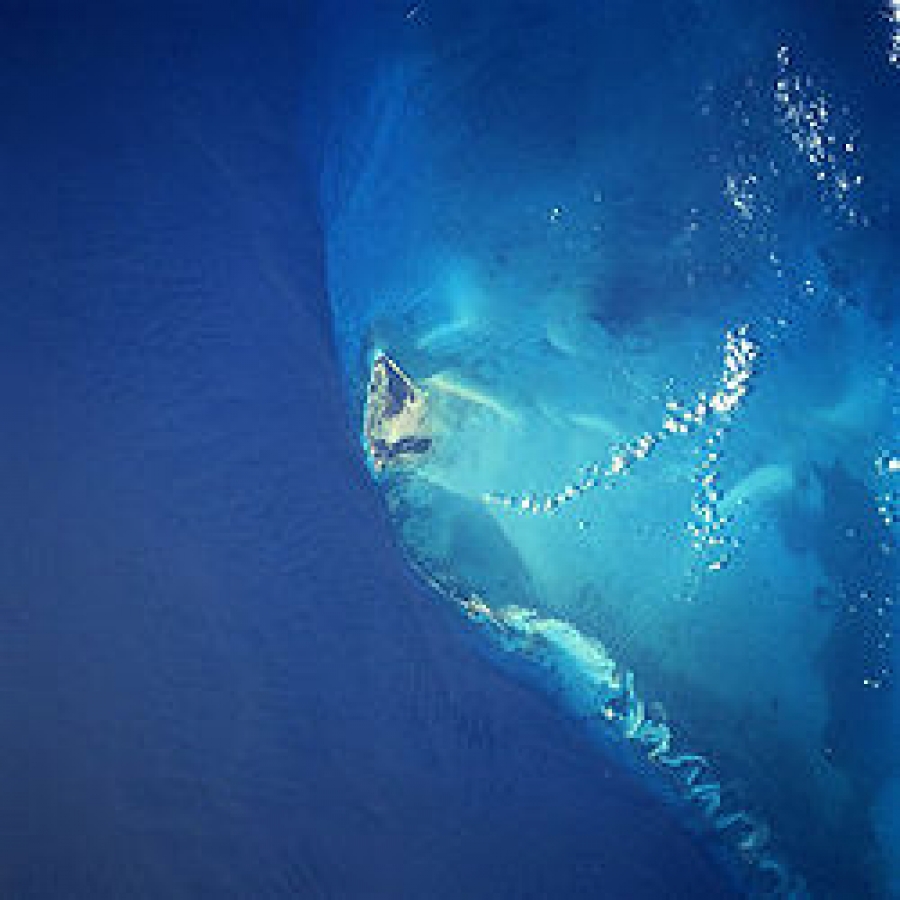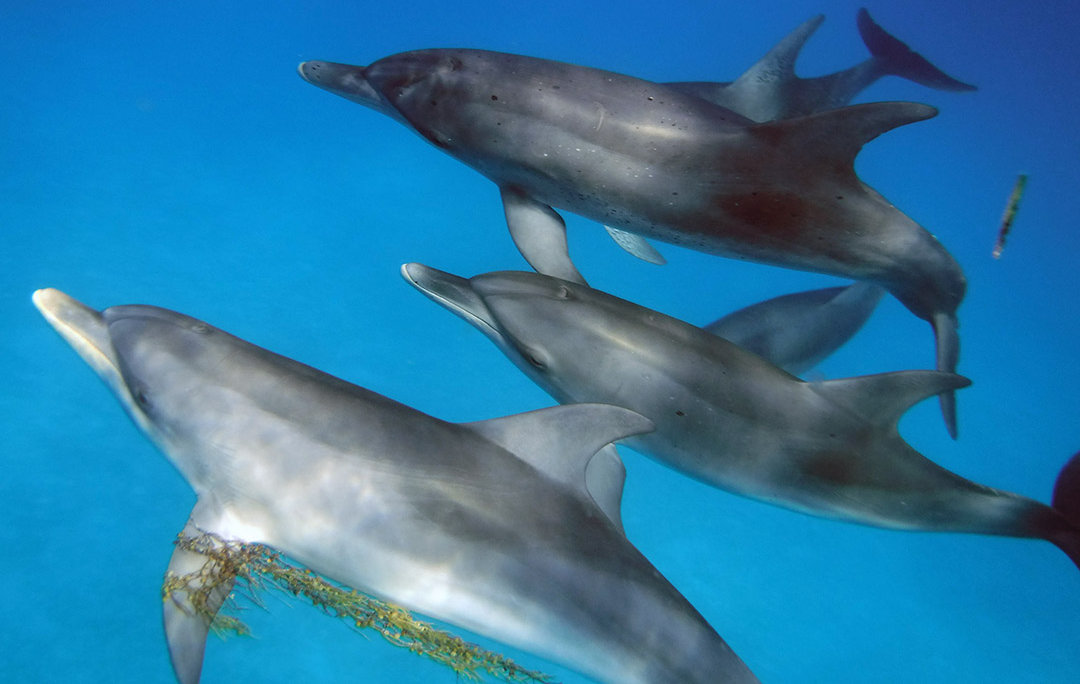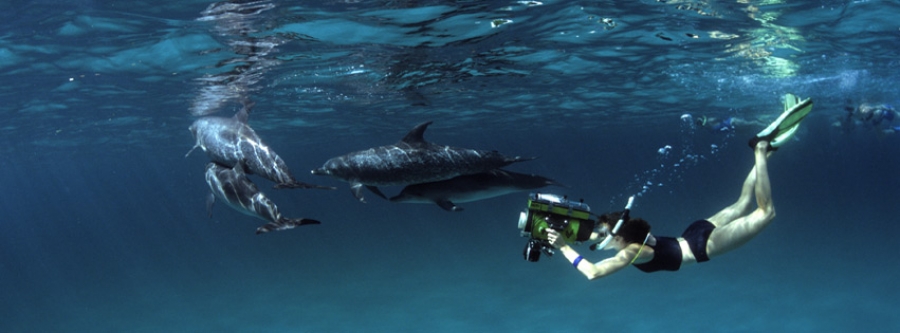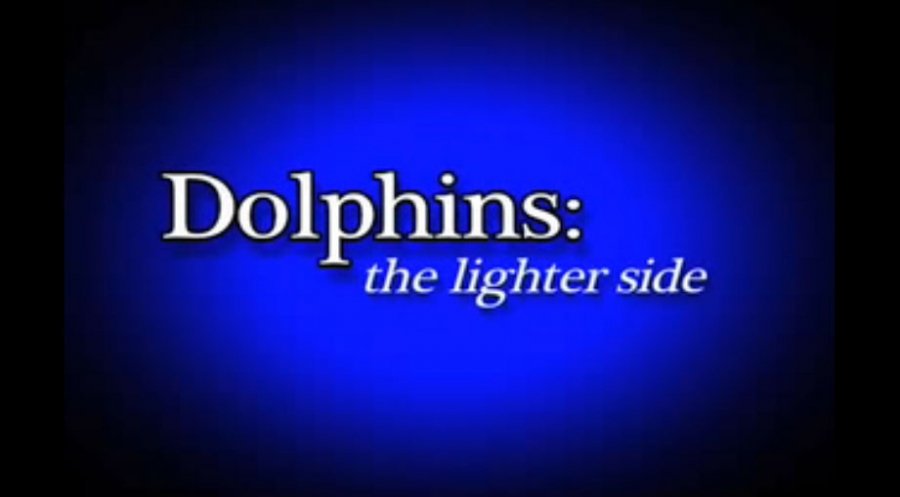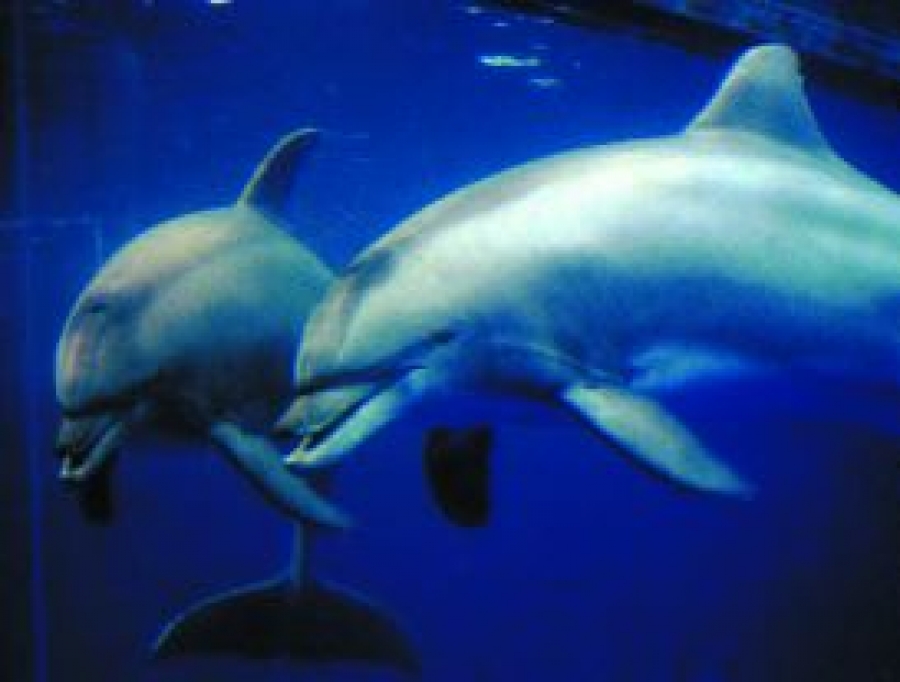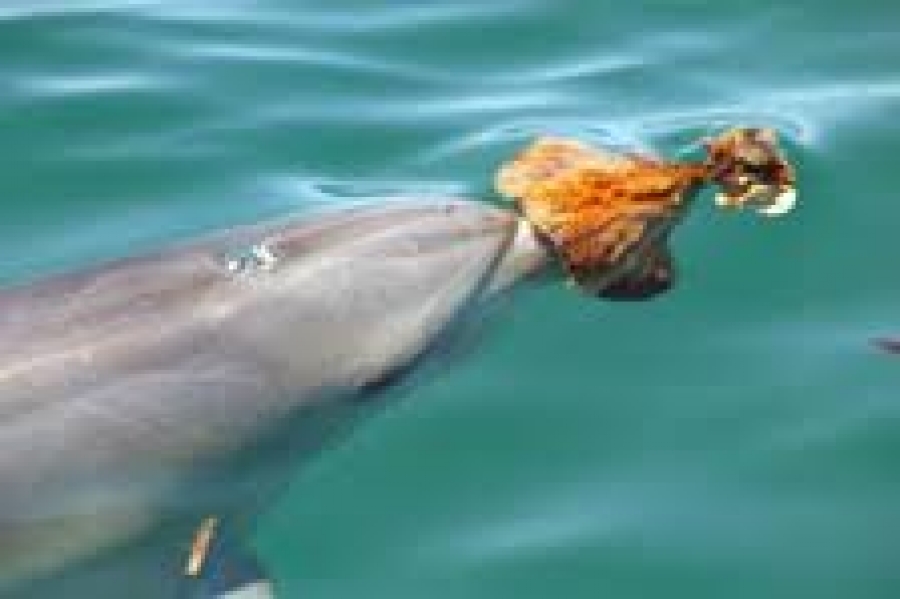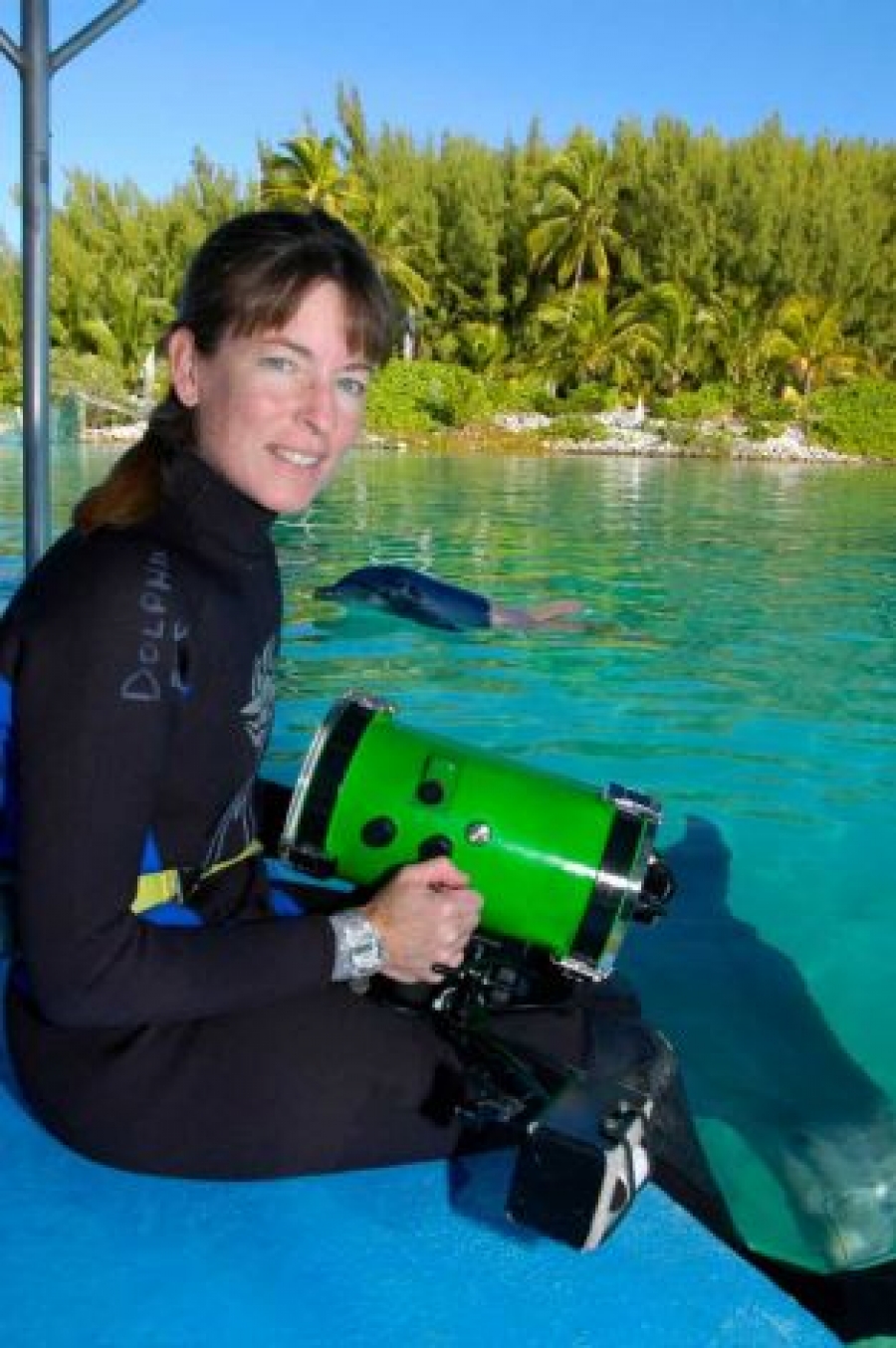Researchers at the Dolphin Communication Project get a lot of questions from the public about dolphin behavior, but one question above all the others has given us the biggest kick. And, sparked a rather interesting answer. The question, posed to us once by a young dolphin enthusiast, was ‘How do dolphins get married?’ Not ‘do dolphins get married’ mind you, but ‘how do they get married’.
Category: The Dolphin Pod
Mikura Field Site video podcast
This week’s special video podcast showcases the Dolphin Communication Project’s research with the Indo-Pacific bottlenose dolphins of Mikura island in Japan.
Bimini Field Site video podcast
This week’s special video podcast turns the spotlight on the Dolphin Communication Project’s research with the Atlantic spotted dolphins near Bimini island in the Bahamas.
Do dolphins have a language?
{mp3}TheDolphinPod-2006-11-25-45409{/mp3}
NOTE: This article originally appeared as an episode of The Dolphin Pod.
Do dolphins have a language? This is a fantastically interesting question, and one that researchers at the Dolphin Communication Project are asked on a regular basis. The answer can be a bit confusing unless we are all on the same page with respect to what we actually mean when we use the word ‘language’.
Dolphin Researcher Spotlight: Darcie Blanding
This week’s special video podcast features an interview with Darcie Blanding; research associate with the Dolphin Communication Project.
Dolphins – The Lighter Side
This week’s video podcast showcases the underwater cinematography of Terramar Productions’ John Anderson. This video montage is taken from ‘Dolphins: The Lighter Side’; a DVD produced by John featuring spectacular footage of diverse dolphin species from around the world. John has worked in conjunction with The Dolphin Communication Project on a variety of projects, and has also worked on major Hollywood productions including Master and Commander, and the IMAX film Dolphins. If you enjoy this video podcast, why not consider supporting DCP’s research efforts by purchasing a full length DVD of ‘Dolphins: The Lighter Side’.
Dolphins recognize themselves in mirrors
{mp3}TheDolphinPod-2006-11-07-66907{/mp3}
If you’ve been following the news lately, you might have seen a little story about elephants that can recognize themselves in mirrors. This is a rather major discovery for animal scientists – elephants now join dolphins as the only animals other than the great apes and humans that can recognize themselves in mirrors. Many scientists use the mirror self-recognition experiment as a test of an animal’s capacity for self-awareness – a trait often linked with cognitive complexity and intelligence.
The mirror self-recognition test was pioneered by Gordon G. Gallup, Jr.
Dolphin Researcher Spotlight: Kelly Melilo
This week’s special video podcast, produced by John Anderson, features an interview with Kelly Melilo: research associate with the Dolphin Communication Project.
Dolphin Tool Use
{mp3}TheDolphinPod-2006-10-24-25375{/mp3}
Indo-Pacific bottlenose dolphins in Shark Bay Australia have been observed using sponges as tools for foraging. Learn more about dolphin tool use in this week’s episode.
In 1969, Neil Armstrong was the first human being to set foot on the moon, marking a major milestone in technological advancement. And, as we all know, he took a giant leap for mankind. This was an important and perhaps much needed victory for humanity; as just 9 years earlier, mankind suffered a major setback at the hands of David Greybeard.
Dolphin Researcher Spotlight: Kathleen Dudzinski
This week’s special video podcast, produced by John Anderson, features an interview with the director of the Dolphin Communication Project; Kathleen Dudzinski.



